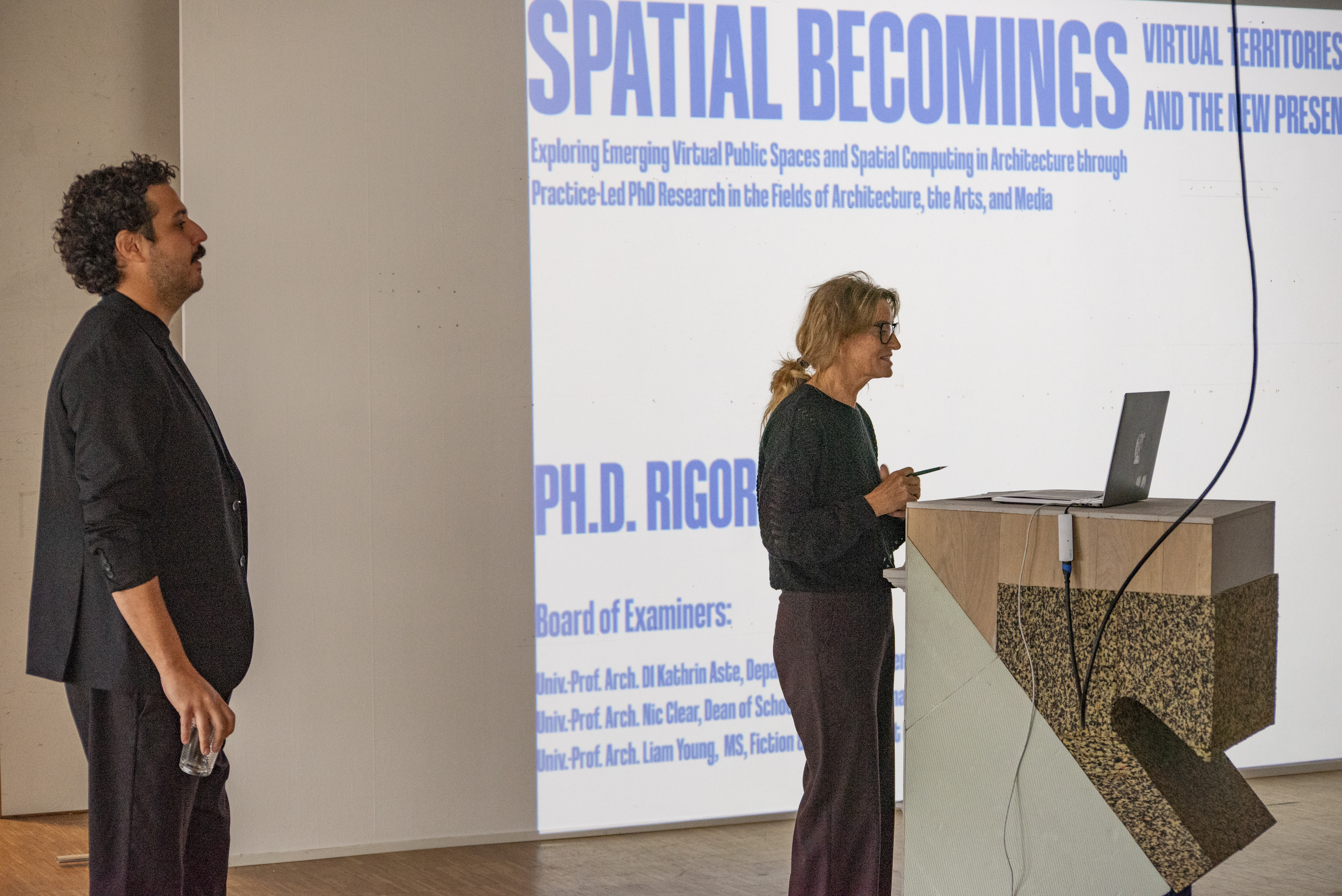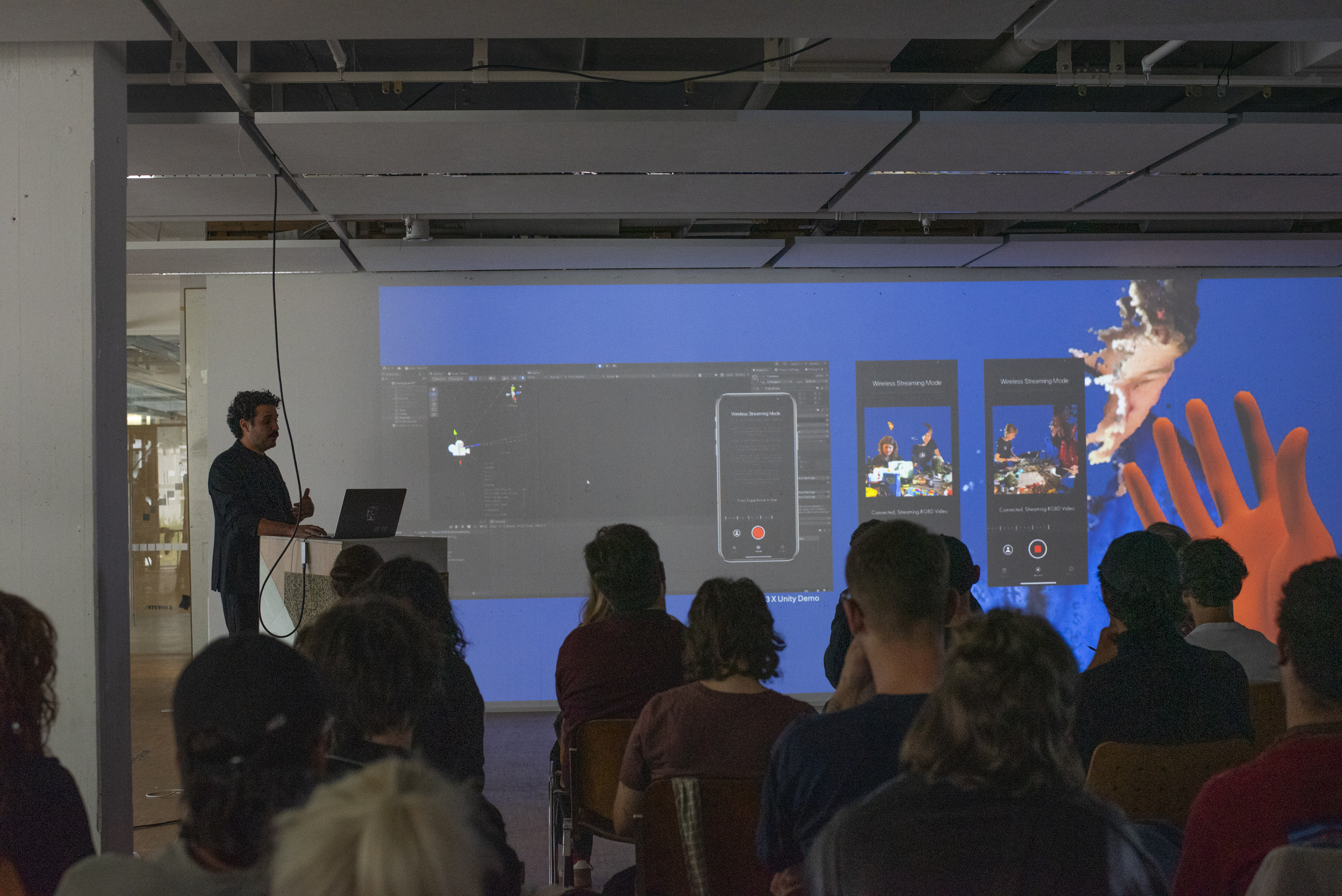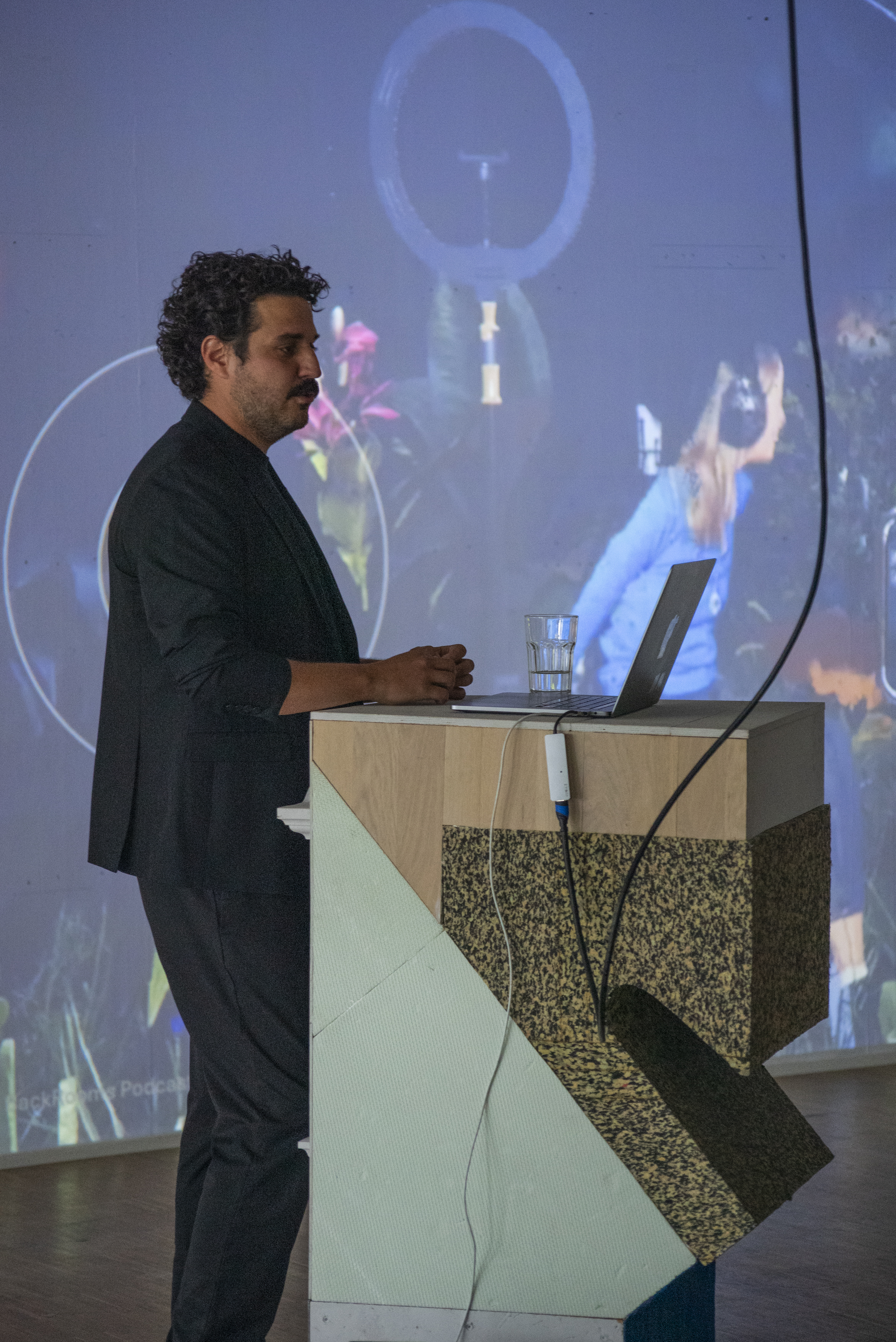Spatial Becomings
Virtual Territories and the New Presence
Virtual Territories and the New Presence
Exploring emerging Virtual Public Spaces and Spatial Computing in Architecture through practice-led PhD research in the fields of Architecture, the Arts, and Media
Bodies Without Organs (BwO) / Becomings / Embodied Telepresence / Extended Self / Hybrid Spaces / Inhabitable Media Object / Inverse Kinematics (IK) / Mixed Reality (MR) / Phygital / Pose Estimation / Social Mixed Reality (SocialMR) / Spatial Computing / VR / AR changing physical space / Social distancing vs Physical distancing / Here and There / Gaming as Design Tool / Avatars as Posthuman Bodies / Architecture and New Media / VR / AR Changing Physical Architecture / VR / AR Influence / Gaming as Designing Tool / Spatial-Internet / Spatial-Interfaces / Architecture as Inhabitable Media Object / Digital Placemaking / Streaming Technologies / Web 2.0
Doctoral Thesis Submitted by Cenk Güzeliş, MArch
In fulfillment of the requirements for the degree of Doctor of Philosophy in Architecture
Leopold-Franzens University of Innsbruck
Faculty of Architecture
Supervised by Univ. Prof. Arch. DI Kathrin Aste ./studio3, Department of Experimental Architecture
you can view the book here ☜
Abstract
Today, the distinctions between the physical and the digital diminish due to the ubiquity of digital media and communication technologies and thus architects are compelled to reconceptualize space within a realm of interconnected digital interactions and immersive media technologies. Digital media has become more than a representational layer or an ornamental addition—it is a spatial and embodied agent. Lev Manovich’s critique of surface-centric architectural applications of media calls on the architect to treat the digital flows of media as intrinsic components in spatial design such that there are no distinctions between materiality and immateriality or physical and virtual space. This research takes up the challenge of exploring the possible evolution of architecture as a practice enabled by media technologies, looking at online culture and the new spaces of spatial computing. The work builds on critical observations of online cultural phenomena: how the social acts of community building, identity experimentation, and collaborative interaction are reconceptualizing the way people inhabit digital space. Places like Second Life, VRChat, Twitch, and Fortnite show how digital spaces have increasingly become social hubs of public life where co-creative activities, social gathering, and cultural production by individuals and communities occur. These trends, however, tend to exist in isolation from physical space and point toward underutilized opportunities for architectural intervention to fashion combined digital-material environments. The research consequently investigates how the notion of public space can be considered to extend into hybrid environments that are expanding to online spaces. A key contribution of this study is the development of Social Mixed Reality (SocialMR), a conceptual and practical framework that integrates digital and physical environments. Unlike traditional SocialVR, which often remains detached from material contexts, SocialMR leverages spatial computing technologies to create real-time mixed reality spaces where interactive digital layers respond to user presence, actions, and the physical environment. These spaces enable architects to reimagine the design of spaces as online, multi-location, and participatory settings, addressing the evolving needs of both online and offline communities while advancing the design of human telepresence in the digital domain. The multi-user Social Mixed Reality Framework, called BwO — deriving from Deleuze and Guattari’s notion of the Body without Organs—reimagines embodiment, spatial production, and collective experiences through overlapping realities in shared settings. This framework contributes to the fields of architecture, media studies, and spatial computing as well as advancing the discourse on online environments and their socio-spatial implications. In doing so, the study examines the challenges of integrating digital spaces into architectural design and introduces a practice-led inquiry into new methods for developing digital spaces as collectively practiced social hubs linked to physical dimensions. Additionally, it proposes a methodological shift by detailing the design of a new Social Mixed Reality platform and its application across four distinct XR installations. Each installation is accompanied by a research paper published in conference proceedings or professional/academic journals, with each paper prefaced by an overview outlining its methodological approach, key findings, and contribution to the broader investigation. The dissertation is structured as a cumulative, practice-led inquiry, bringing together four interrelated research papers, an introductory chapter, and a concluding section. The introductory chapter establishes the theoretical and historical foundation by mapping architecture’s engagement with media technologies in relation to the body. It traces a trajectory from the Austrian avant- garde to contemporary SocialVR platforms, demonstrating how these environments have evolved into spaces for collective virtual spatial practices. The first paper explores the role of SocialVR in architecture, examining its transition into Social Mixed Reality (SocialMR) within domestic settings and analyzing how immersive digital experiences reshape spatial configurations and social interactions across physical and virtual realms. The second paper focuses on the aesthetic and experiential dimensions of virtual world creation, emphasizing artdriven practices that employ motion-tracking and Social Mixed Reality to enable real-time embodiment through sculptural avatars, generating a unique digital presence, conceived as architectural bodies. The third paper investigates the social mixed reality through a site-specific installation that merges physical and digital environments, producing a hybrid spatial experience. The final paper expands on these discussions by documenting a collective XR dinner event facilitated by live volumetric scanning and streaming technologies. The concluding chapter synthesizes the insights from each study, reflecting on their implications for future research in digital media and spatial practice.
Today, the distinctions between the physical and the digital diminish due to the ubiquity of digital media and communication technologies and thus architects are compelled to reconceptualize space within a realm of interconnected digital interactions and immersive media technologies. Digital media has become more than a representational layer or an ornamental addition—it is a spatial and embodied agent. Lev Manovich’s critique of surface-centric architectural applications of media calls on the architect to treat the digital flows of media as intrinsic components in spatial design such that there are no distinctions between materiality and immateriality or physical and virtual space. This research takes up the challenge of exploring the possible evolution of architecture as a practice enabled by media technologies, looking at online culture and the new spaces of spatial computing. The work builds on critical observations of online cultural phenomena: how the social acts of community building, identity experimentation, and collaborative interaction are reconceptualizing the way people inhabit digital space. Places like Second Life, VRChat, Twitch, and Fortnite show how digital spaces have increasingly become social hubs of public life where co-creative activities, social gathering, and cultural production by individuals and communities occur. These trends, however, tend to exist in isolation from physical space and point toward underutilized opportunities for architectural intervention to fashion combined digital-material environments. The research consequently investigates how the notion of public space can be considered to extend into hybrid environments that are expanding to online spaces. A key contribution of this study is the development of Social Mixed Reality (SocialMR), a conceptual and practical framework that integrates digital and physical environments. Unlike traditional SocialVR, which often remains detached from material contexts, SocialMR leverages spatial computing technologies to create real-time mixed reality spaces where interactive digital layers respond to user presence, actions, and the physical environment. These spaces enable architects to reimagine the design of spaces as online, multi-location, and participatory settings, addressing the evolving needs of both online and offline communities while advancing the design of human telepresence in the digital domain. The multi-user Social Mixed Reality Framework, called BwO — deriving from Deleuze and Guattari’s notion of the Body without Organs—reimagines embodiment, spatial production, and collective experiences through overlapping realities in shared settings. This framework contributes to the fields of architecture, media studies, and spatial computing as well as advancing the discourse on online environments and their socio-spatial implications. In doing so, the study examines the challenges of integrating digital spaces into architectural design and introduces a practice-led inquiry into new methods for developing digital spaces as collectively practiced social hubs linked to physical dimensions. Additionally, it proposes a methodological shift by detailing the design of a new Social Mixed Reality platform and its application across four distinct XR installations. Each installation is accompanied by a research paper published in conference proceedings or professional/academic journals, with each paper prefaced by an overview outlining its methodological approach, key findings, and contribution to the broader investigation. The dissertation is structured as a cumulative, practice-led inquiry, bringing together four interrelated research papers, an introductory chapter, and a concluding section. The introductory chapter establishes the theoretical and historical foundation by mapping architecture’s engagement with media technologies in relation to the body. It traces a trajectory from the Austrian avant- garde to contemporary SocialVR platforms, demonstrating how these environments have evolved into spaces for collective virtual spatial practices. The first paper explores the role of SocialVR in architecture, examining its transition into Social Mixed Reality (SocialMR) within domestic settings and analyzing how immersive digital experiences reshape spatial configurations and social interactions across physical and virtual realms. The second paper focuses on the aesthetic and experiential dimensions of virtual world creation, emphasizing artdriven practices that employ motion-tracking and Social Mixed Reality to enable real-time embodiment through sculptural avatars, generating a unique digital presence, conceived as architectural bodies. The third paper investigates the social mixed reality through a site-specific installation that merges physical and digital environments, producing a hybrid spatial experience. The final paper expands on these discussions by documenting a collective XR dinner event facilitated by live volumetric scanning and streaming technologies. The concluding chapter synthesizes the insights from each study, reflecting on their implications for future research in digital media and spatial practice.












photo credit Christoph Schwarz